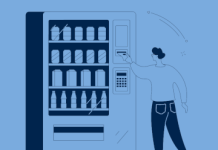Source is Amazon Business Productivity
Today, AWS AppFabric, a service that connects multiple SaaS applications to enhance security and increase productivity, announced a new feature that helps application developers reimagine end-user productivity in software-as-a-service (SaaS) applications by generating insights and actions with context from multiple applications. Since launching AppFabric, IT professionals connect 19 different SaaS applications to monitor application logs for security issues. AppFabric’s productivity feature (preview) helps application developers provide generative artificial intelligence (AI) driven insights directly in their user interface (UI). Application developers use AppFabric to create new or enhance existing generative AI assistants with data across multiple applications. When developers embed AppFabric directly into their application’s UI, they maintain a consistent experience for their end users while enhancing their experience with relevant context from other applications. This increased context allows them to provide a more personalized end-user experience that increases adoption and loyalty, and users benefit from access to insights they need without interrupting their flow of work. For example, by calling AppFabric’s generative AI-powered APIs, developers could generate meeting preparation notes, draft emails, create tasks, and initiate other action items from across a user’s applications. Today, AppFabric’s productivity feature integrates data from Asana, Atlassian Jira suite, Miro, Slack, Smartsheet, Google Workspace, and Microsoft 365.
Studies suggest that employees switch between an average of six SaaS applications from different vendors to complete tasks. These applications enhance productivity for specific functions, but they force users to switch context constantly. Application developers see an opportunity to use generative AI to reduce context switching and provide a richer user experience, but developers building a generative AI assistant are limited to data within their own software, with no context from users’ other applications. Without including cross-app data, data silos form and generative AI results miss important context from other applications that help end users make better decisions. For example, a product manager collaborating in the Atlassian Jira suite with Engineering has to switch to Smartsheet to share updates with Marketing. However, access to more SaaS application data doesn’t automatically improve a user’s experience with a generative AI assistant unless each application works together. Each SaaS application uses unique data formats and APIs, requiring developers to process and normalize this disparate data to make it useful. Some developers begin by incorporating conversational user interfaces (chatbots), but these chatbots are still limited to information available to their application forcing users to toggle between multiple applications to complete a task. Finally, even if all of those issues are resolved, developers still have to ensure they deliver accurate and relevant results per user. This requires securely coordinating user-level permissions and providing reference links with each generated response for human verification.
With AppFabric’s productivity feature, application users enjoy richer insights within the context of the applications they use because those insights are created with information from across multiple applications. Available in preview today, AppFabric offers two APIs to application developers. First is the actionable insights API that helps users best manage their day by surfacing actionable insights and executing cross-app actions based on activity across their applications, including emails, calendar, messages, tasks, and more. Second is the meeting preparation API that helps users best prepare for upcoming meetings by summarizing the meeting purpose and surfacing relevant cross-app artifacts such as emails, messages, and more. AppFabric’s generative AI-powered APIs use Anthropic’s Claude large language model to enable application developers to call APIs that generate cross-application data insights and actions directly in their application. Using AppFabric’s APIs, developers enhance existing, or create new, generative AI assistants without having to fine-tune a model, write a custom prompt, or build integrations across multiple applications.
AppFabric also processes SaaS app data for use in other applications by automatically normalizing disparate data types into a format any application can use, eliminating the need for complex and costly data transformation. For example, an application developer for a project management company might use AppFabric to enhance their current generative AI assistant to generate project tasks for a product manager coordinating a new product launch across engineering and marketing. Tasks are generated for the product manager based on context from her emails, meetings, and instant messages. Developers embed AppFabric directly into their application’s UI, retaining full control of the user experience while providing personalized insights and recommended actions to end users with context from across their applications. This makes new generative AI capabilities available in employees’ preferred SaaS application and is accessible in the apps they choose to complete their tasks. For example, Asana uses AppFabric in their application so their end users experience enhanced collaboration with insights generated from Asana tasks, Google meetings, and Slack messages. Cross-application insights are all provided from Asana’s homepage. Finally, generated insights and recommended actions are refreshed regularly to keep end users productive throughout their work day, and results include a reference link to supporting material saving users time searching for content while building trust in each generated output.
To get started with AppFabric’s generative AI-powered APIs available in Preview, application developers call the CreateAppClient API to register their application using any common programming language (e.g., Java, Python). The app developer then chooses how to embed AppFabric in their own user interface while AppFabric verifies the app developer registration information. Once the application developer deploys their new functionality, users manage their preferences to enable this new feature across their authorized apps. Follow the getting started guide for application developers documentation for details.
AppFabric’s productivity feature is available in Preview today in the US East (N. Virginia) Region. To learn more, visit aws.amazon.com/appfabric/productivity.
Anthropic is an AI safety and research company that’s working to build reliable, interpretable, and steerable AI systems.
“AWS AppFabric is one of the most interesting uses of generative AI we’ve seen to help application developers enhance their productivity assistants,” says Matt Bell, Head of Product Research at Anthropic. “We are excited about AppFabric’s method of connecting applications, leveraging Claude to achieve deep understanding of the knowledge in these applications, and intelligently displaying the insights in the end user’s chosen app.”
Asana is a leading work management platform that helps enterprises drive productivity and maximize impact.
“The way we work is broken. Leaders globally are struggling to find the right tools to reach their goals with limited resources. Today, AI is a catalyst for organizations from depending on email, spreadsheets, and docs. And with the power of Asana and AWS, executives have an air traffic control for their organizations — showing the challenges that may lie ahead, demonstrating ways to pivot, and coordinating teams across the globe,” said Alex Hood, Chief Product Officer at Asana. “We’re excited to continue our partnership with AWS to bring AppFabric and Asana Intelligence together, to help enterprises save precious time and resources by working smarter.”
Miro is a visual workspace for innovation where teams manage projects, design products, and build the future together.
“Miro’s mission is to empower teams to create the next big thing through a collaboration workspace designed specifically to simplify the end to end innovation lifecycle. Our platform enables distributed teams to come together to develop strategy, design products and services, and speed time to market,” said Andrew Edelman, Global Head of Partnerships at Miro. “We have already experienced the powerful potential of our collaboration and partnership with AWS AppFabric, following the launch of our security and observability integration earlier this year. And, we are excited to continue on this journey to add even more value for our customers.”
Smartsheet is an enterprise work management platform.
“Smartsheet enables enterprises to manage projects, automate processes, and scale programs in one powerful platform. With Smartsheet AI one of the things we’re helping our users with is to accelerate their productivity within Smartsheet to gain fast insights from complex sets of data. Our users continue to want better interoperability between Smartsheet and other apps to reduce context switching and create even richer insights. With AppFabric’s productivity feature, we aim to enable a single source of cross-app user data needed to enrich Smartsheet AI platform – delivering stronger ROI for our users with minimal work,” says Urmila Kukreja, Director, Product Management at Smartsheet.
Zoom is an all-in-one intelligent collaboration platform that makes connecting easier, more immersive, and more dynamic for businesses and individuals.
“As an AWS Partner, we are excited with AppFabric’s progress. Enabling collaboration use cases for Zoom and AWS customers is core to the mission of our open developer ecosystem, and we look forward to continuing working with AWS to serve the needs of our joint customers,” says Brendan Ittelson, Chief Ecosystem Officer.













